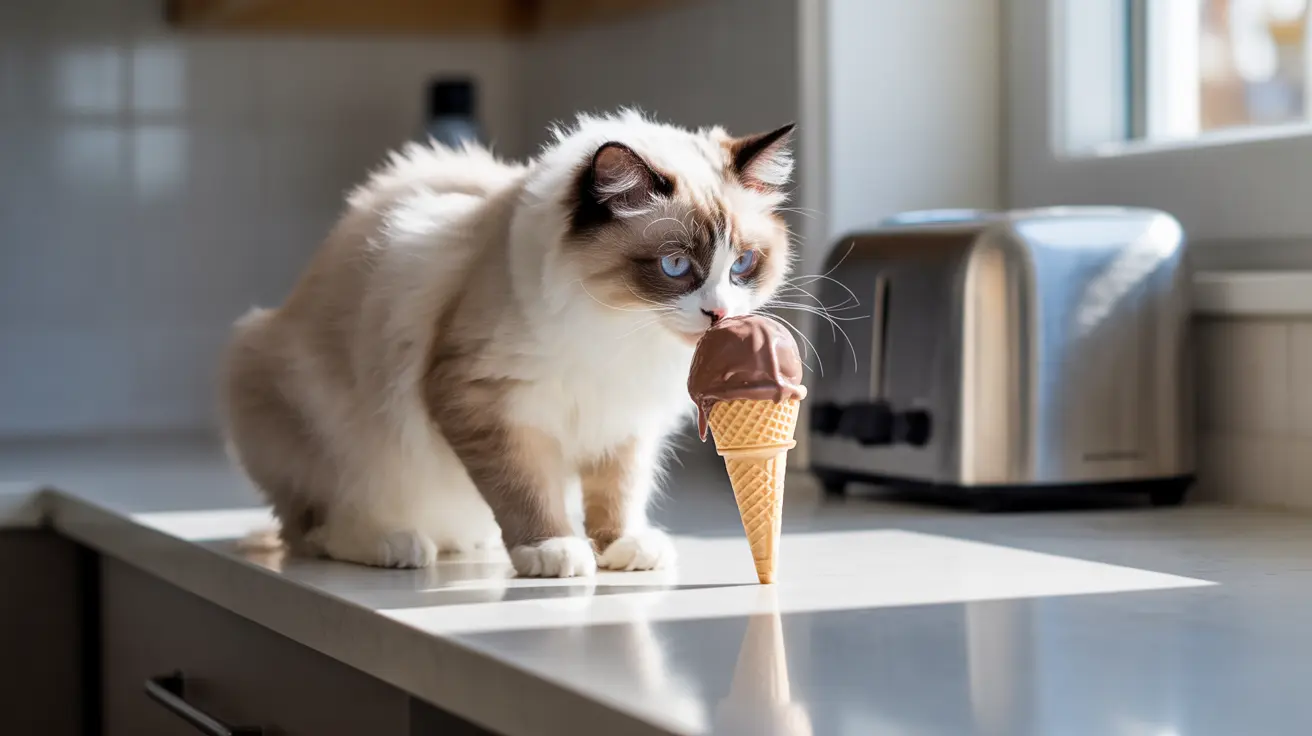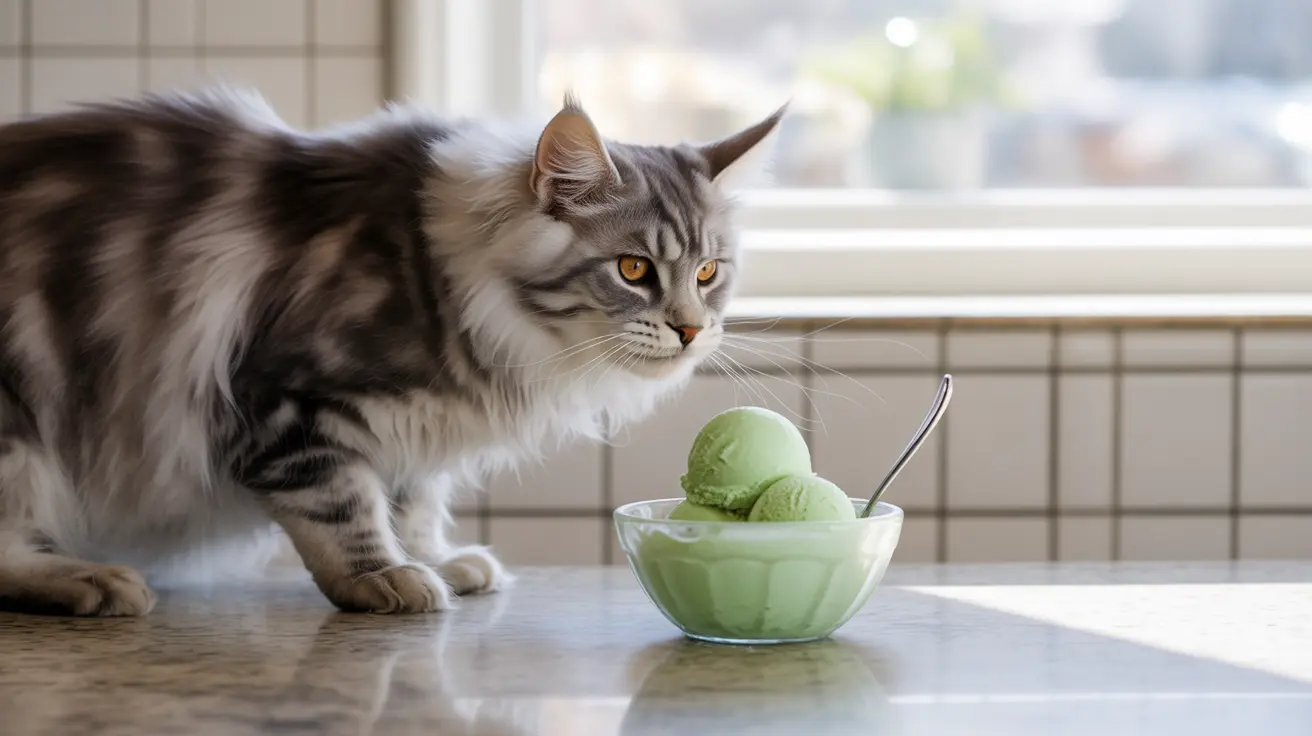Feeding Cats Ice Cream: Safe Treats or Risky Snack?

Have you ever wondered if your cat can enjoy a tasty treat like ice cream? It’s tempting to share this cold, creamy delight with your furry friend, especially on a hot day.
But before you offer your cat a lick, there are important things you need to know. Your cat’s health and happiness depend on what you feed them, and not all human snacks are safe.
Keep reading to discover whether feeding cats ice cream is a good idea, what risks to watch out for, and safe alternatives that will make your pet purr with joy.
Don’t miss out on this essential guide that will help you keep your cat both happy and healthy!

Credit: www.reddit.com
Cats And Dairy
Cats and dairy have a curious relationship. Many people think cats love milk and ice cream. This belief comes from cartoons and old stories.
Yet, the truth is different. Most adult cats cannot digest dairy well. Their bodies do not produce enough of the enzyme called lactase.
Lactase helps break down lactose, the sugar in milk and ice cream. Without enough lactase, cats can have tummy troubles.
Understanding how cats react to dairy helps pet owners make better choices. Feeding cats ice cream or milk can cause more harm than good.
It is important to learn about lactose intolerance and other common dairy reactions in cats.
Lactose Intolerance In Cats
Many cats are lactose intolerant. This means they cannot digest lactose properly. Kittens have lactase to digest their mother’s milk.
As cats grow, lactase levels drop. Adult cats lose the ability to digest lactose. Drinking milk or eating ice cream can cause gas, cramps, or diarrhea.
Some cats may suffer more than others. Lactose intolerance can lead to upset stomachs and dehydration.
Common Dairy Reactions
Cats can react to dairy in different ways. Some show mild symptoms like soft stools. Others get severe diarrhea or vomiting.
Dairy can also cause skin problems or allergies. Cats with sensitive stomachs should avoid dairy products. Ice cream often contains sugar and fat, which are not healthy for cats.
Feeding dairy treats can lead to weight gain and other health issues. Watch your cat carefully after any dairy exposure.
Ingredients In Ice Cream
Ice cream looks like a tasty treat for cats. But its ingredients might cause problems. Understanding what is inside helps keep cats safe.
Some ingredients can be harmful or hard to digest for cats. Let’s explore the common components in ice cream.
Sugar And Sweeteners
Ice cream contains a lot of sugar. Cats do not need sugar in their diet. Sugar can lead to obesity and dental issues in cats. Some ice creams have artificial sweeteners.
These can be toxic to cats and cause serious health problems. Avoid giving any sweets with sugar or sweeteners to cats.
Artificial Additives
Many ice creams have artificial colors and flavors. These additives may upset a cat’s stomach. Some can cause allergic reactions or poisoning. Cats have sensitive digestive systems.
It is better to keep them away from artificial ingredients. Natural food is safer and healthier for cats.
Milk And Cream Content
Milk and cream are main parts of ice cream. Most cats are lactose intolerant. This means they cannot digest milk well.
Eating milk-based ice cream can cause diarrhea and stomach pain. Even small amounts can be uncomfortable for cats.
It is best to avoid dairy in their treats.
Health Risks Of Ice Cream For Cats
Ice cream might seem like a fun treat for cats, but it can bring serious health risks. Cats have different digestive systems than humans.
What is safe for people may harm your feline friend. Understanding these risks helps you protect your cat’s health.
Digestive Issues
Many cats are lactose intolerant. Their bodies cannot digest milk sugar well. Eating ice cream can cause stomach pain, gas, and diarrhea.
These symptoms make cats uncomfortable and sick. Avoid giving them dairy products to keep their tummies safe.
Toxic Ingredients
Some ice cream contains ingredients toxic to cats. Chocolate, certain nuts, and artificial sweeteners can be deadly.
Even small amounts can cause poisoning. Check labels carefully. Keep ice cream with harmful ingredients far away from cats.
Obesity And Diabetes
Ice cream has high sugar and fat content. Regular feeding can lead to weight gain. Obesity increases the risk of diabetes in cats.
Diabetes requires lifelong care and medication. Prevent it by avoiding sugary treats like ice cream.
Safe Alternatives To Ice Cream
Cats enjoy cool treats just like people. Ice cream can upset their stomach or cause health issues.
Safe alternatives keep your cat happy and healthy. These options are tasty and easy to prepare or buy.
Cat-friendly Frozen Treats
Special frozen treats made for cats use safe ingredients. They do not contain sugar or dairy, which can harm cats.
These treats help keep cats cool on hot days. You can find them in pet stores or online shops.
Homemade Options
Make frozen treats at home using simple ingredients. Plain yogurt or pureed pumpkin can be frozen in small portions.
Always use lactose-free or low-lactose yogurt. Avoid adding sugar or artificial flavors. These treats are fresh and safe for cats.
Commercial Cat Treats
Many brands offer frozen or chilled treats made for cats. These products follow pet safety guidelines and have balanced nutrition.
Check the label for ingredients and feeding instructions. Buying these treats ensures your cat enjoys a safe snack.
Tips For Treating Cats Safely
Giving your cat a special treat like ice cream requires care and attention. Cats have different needs than humans.
Some ingredients can upset their stomach or harm their health. Follow safe tips to keep your cat happy and healthy while enjoying treats.
Always think about your cat’s well-being first. Treats should be a small part of their diet.
Careful choices protect your pet from illness or discomfort. Here are some important tips to treat cats safely with ice cream.
Moderation And Portion Control
Serve ice cream in very small amounts. A tiny spoonful is enough for most cats. Too much can cause stomach upset or diarrhea.
Treats should not replace regular cat food. Offer ice cream only once in a while to avoid problems.
Checking Ingredient Labels
Look at the ice cream ingredients carefully. Avoid any with chocolate, xylitol, or artificial sweeteners. These can be toxic to cats.
Choose plain ice cream with no added sugars or flavors. Lactose-free options are better for cats with sensitive stomachs.
Consulting A Veterinarian
Ask your vet before giving ice cream to your cat. They know your cat’s health history best.
Your vet can advise if ice cream is safe for your pet. Follow their advice to keep your cat safe and healthy.

Credit: www.petscare.com

Credit: www.petscare.com
Frequently Asked Questions
Can Cats Safely Eat Ice Cream?
Cats should not eat regular ice cream. It contains lactose and sugar, which can cause digestive issues and upset their stomach.
What Are The Risks Of Feeding Cats Ice Cream?
Feeding cats ice cream can lead to diarrhea, vomiting, and lactose intolerance symptoms. It may also cause obesity and other health problems.
Are There Cat-friendly Ice Cream Alternatives?
Yes, some brands offer lactose-free, cat-safe ice cream treats. These are specially formulated to be safe and healthy for cats.
How Often Can Cats Have Ice Cream Treats?
Cats should rarely have ice cream treats, if at all. Occasional treats are fine, but ice cream should not be a regular part of their diet.
Conclusion
Feeding cats ice cream can be risky and is not often safe. Cats may get upset stomachs or allergies from dairy.
Small amounts of plain, lactose-free ice cream might be okay sometimes. Always watch your cat for any bad reactions.
Choose treats made just for cats to keep them healthy. Remember, water and regular cat food are the best choices.
Treat your cat kindly and avoid giving too many human snacks. Your cat will thank you with purrs and love.






